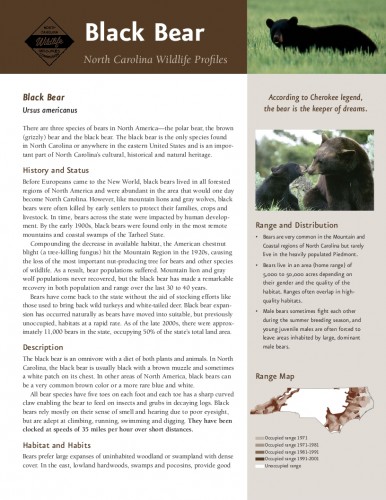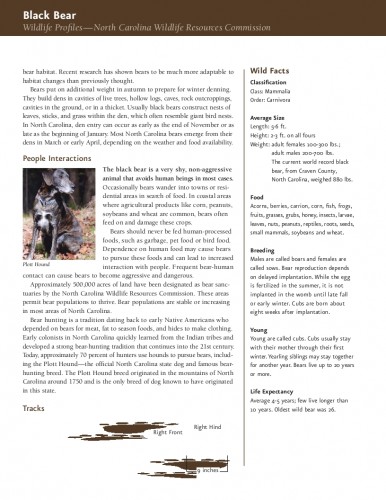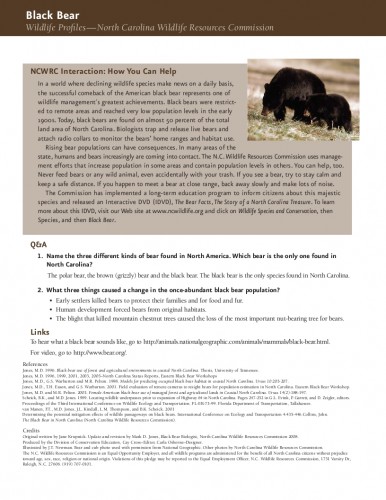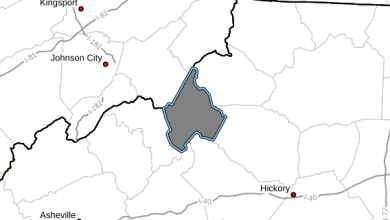Last Updated on October 2, 2022 5:53 pm
Black bear sightings throughout North Carolina are becoming more common as the bear population increases and bears expand their home range according to the North Carolina Wildlife Resource Commission.
While black bears are not inherently dangerous and are rarely aggressive toward people, the Wildlife Commission provides guidelines the public can follow to avoid potential conflicts.
Overview:
The black bear is the only bear species found in North Carolina or anywhere in the eastern United States. The successful comeback of the American black bear in North Carolina represents one of wildlife management's greatest achievements. Black bears were once restricted to remote areas and reached very low population levels in the mid-1900s. Today, black bears are found approximately 60% of the total land area of North Carolina.
As habitat is developed and human populations increase, it is ultimately human attitudes toward bears that will determine whether bears will continue to exist in the state. Unfortunately, bears are viewed either as dangerous animals or cuddly pets. It is best to avoid these extreme views and instead show a healthy respect for this magnificent forest animal.
Their diets typically consist of acorns, berries, carrion, corn, fish, frogs, fruits, grasses, grubs, honey, insects, larvae, leaves, nuts, peanuts, reptiles, roots, seeds, small mammals, soybeans and wheat. Bears prefer large expanses of uninhabited woodland or swampland with dense cover. In the east, lowland hardwoods, swamps and pocosins, provide good bear habitat. These types of habitat provide the necessary travel corridors, escape cover and natural foods that bears need to thrive in North Carolina.
*Click on images below for a larger view* Information provided by North Carolina Wildlife Resource Commission.






















